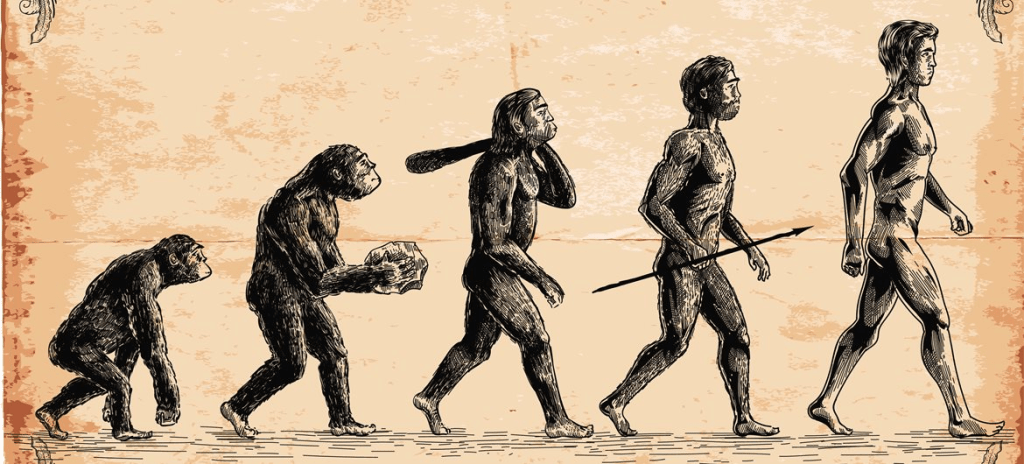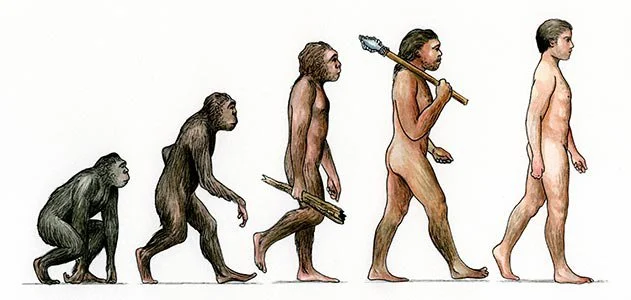Evolution is the process by which different species of living organisms change over time. It is one of the fundamental principles of biology, and it helps to explain how the diversity of life on earth came to be.
The theory of evolution by natural selection was first proposed by Charles Darwin and Alfred Russel Wallace in the mid-19th century. It explains that evolution occurs when organisms with certain inherited traits are more likely to survive and reproduce than those without those traits. These traits are passed down to their offspring, and over time, the population evolves to have a higher proportion of individuals with those advantageous traits.

There are several lines of evidence that support the theory of evolution. One of the most compelling is the fossil record, which shows that the earth has been home to a wide variety of species over time, many of which are now extinct. The fossil record also reveals that some species have changed significantly over time, while others have remained relatively unchanged.
Another line of evidence for evolution comes from comparative anatomy and physiology. By comparing the physical characteristics of different species, scientists have been able to identify common ancestry and trace the evolutionary relationships between different groups of organisms. For example, the skeletal structure of a human hand is similar to that of a bat’s wing, indicating that they may have evolved from a common ancestor.
Molecular evidence also supports the theory of evolution. By comparing the DNA and protein sequences of different species, scientists have been able to demonstrate that they share a common ancestry and trace the evolutionary relationships between them. For example, humans and chimpanzees share about 98% of their DNA, indicating that they are closely related.
There are several mechanisms that can drive evolution, including natural selection, genetic drift, and gene flow. Natural selection is the process by which certain inherited traits are more likely to be passed down to the next generation if they increase the individual’s chances of survival and reproduction. This can lead to the evolution of new species over time.
Genetic drift is the random fluctuation in the frequency of inherited traits within a population. It can occur when a small group of individuals becomes isolated from the larger population and the traits that are present in the small group become more common over time. This can lead to the evolution of new species if the small group becomes reproductively isolated from the larger population.

Gene flow is the movement of genes from one population to another. It can occur when individuals migrate from one population to another and breed with the resident population, bringing with them new genes that can be passed down to the next generation. This can lead to the evolution of new species if the two populations become reproductively isolated from each other.
There are several factors that can influence the rate of evolution, including the size of the population, the level of genetic variation within the population, and the presence of selective pressures. A small population is more likely to experience genetic drift and may evolve more quickly than a larger population. A population with a high level of genetic variation is more likely to evolve in response to selective pressures because there are more traits
to choose from. Selective pressures are factors that influence the survival and reproduction of individuals within a population, such as competition for resources, predation, and changing environmental conditions.
One of the most famous examples of evolution by natural selection is the case of the finches on the Galapagos Islands. Charles Darwin observed that the finches on the different islands had different beak shapes and sizes, which were adapted to the local food sources. For example, finches on one island had long, thin beaks that were well-suited for extracting insects from narrow crevices, while finches on another island had short, thick beaks that were better for cracking open nuts.
Evolution is a continuous process that is ongoing today. It is responsible for the diversity of life on earth and helps to explain how new species come into existence. Despite its importance, the theory of evolution has been the subject of controversy and debate, particularly in the United States, where it has been challenged by some religious groups. However, the overwhelming weight of scientific evidence supports the theory of evolution, and it is widely accepted by the scientific community as one of the most well-established scientific principles.







